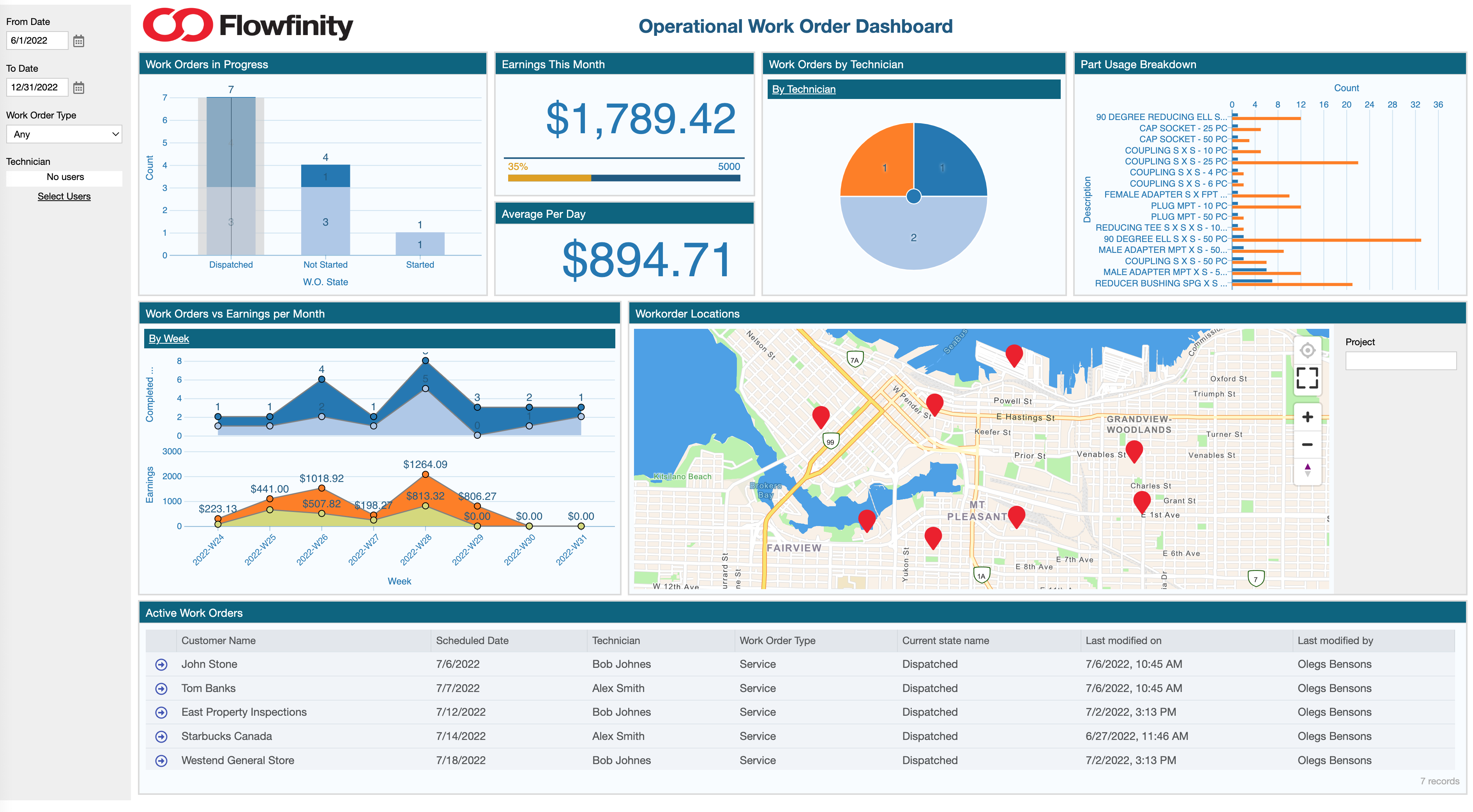Situational Awareness: Putting Events in Context to Checkmate Operational Challenges
July 15, 2022, by Alex Puttonen

Background
Running a complex enterprise like a utility can be like playing a game of chess, if you’re not aware of your situation, the status of your assets and people relative to external challenges, you could soon be put in check by a major incident or service disruption.
New developments in no-code platforms and Internet of Things (IoT) sensor integration mean that Situational Awareness (SA) technologies are now within the reach of most.
Tech-savvy operators across a variety of industries including water are recognizing that situational awareness is the key to gaining a meaningful understanding of the context of operational events as they occur to ensure successful sustained service delivery.
Increasingly business leaders are demanding situational awareness coupled with data visualization to provide real-time insight into operations for daily decision making. This article will provide an introduction to technologies that you can leverage with Flowfinity to keep all your pieces on the board and checkmate your operational challenges.
What Is Situational Awareness
In its simplest form, situational awareness (SA) means developing and maintaining as close to perfect knowledge as possible of one's surroundings.
In a business context, organizations must address a variety of challenges and threats from supply chain issues to ever-evolving regulatory requirements and the shifting competitive landscape.
In a utility setting, SA technologies allow you to go beyond manual checks of your assets by leveraging the capabilities of IoT connected sensors, generally compatible with Modbus protocols, plus GIS location data, to compliment human operators and augment existing SCADA systems.
To put it simply, a robust SA system is a set of data gathering and interpretation tools for monitoring and visualizing operational data in context to make better informed decisions.
By deploying these systems, you can deliver relevant information through interactive operational dashboards and automated alerts so your teams can respond effectively if things go awry.
For example, you could deploy sensors to monitor power usage and run pumps at times when consumption is low to save on energy costs, however if another sensor detected water levels rising above safe thresholds this could be overruled and the pumps adjusted to prevent flooding.
Internet of Things Driven SA
One major factor in improved situational awareness is the rise of Internet of Things (IoT) technologies. Increasingly enterprises are investing in an array of physical devices like sensors and cameras that are networked together to collect and stream data 24/7.
You can install IoT devices that will gather the information they need to make operational decisions. These devices can function on a continuous basis, installed in ways that complement human abilities or go well beyond what humans could perceive.
Sensors can pick up temperature, power consumption, water flow, liquid levels, vibration, and other relevant metrics, while GIS technologies track movement across the environment. All this data feeds into a central database for humans to view or workflow automations to react.
The potential uses for IoT technology have expanded rapidly as hardware prices fall and software options improve. The IoT market continues to grow, and a recent Bain & Company study revealed that enterprise and industrial customers alike were investing in IoT, with around half having already completed a proof-of-concept.
However, many utilities have stalled in their efforts to achieve situational awareness as the investment and complexity of deploying a comprehensive system has proven daunting for all but the largest and most sophisticated operators.
Now, Flowfinity has invested in an array of necessary technologies that could help bring about digital transformation to the broader utilities sector so you can take full advantage of situational awareness IoT capabilities to drive business intelligence.
SA Data Visualization and Workflow Automation
Situational awareness technologies go beyond the physical IoT devices, as even a vast array of sensors won’t be useful if you don’t have a way to aggregate and understand their data. The actual software for situational awareness is what draws together all that IoT data and transforms it into a format that humans find useful.
Traditionally the complexity and cost of building a solution that is compatible with various sensors and can integrate with core systems was too overwhelming to be viable for most organizations.
Now software vendors are promising situational awareness, but many simply collect and transmit data. These ‘solutions’ are limited in their capabilities and rigid in how they can be deployed.
By contrast Flowfinity is a no-code platform that can be configured to meet your exact specifications and integrate with your core systems to get information across to users in a way that generates actionable insights about the environment, and even trigger corrective action through workflow automations based on your conditional requirements.
This ensures that your system is providing the right data to the right people at the right time, and events that meet designated criteria will immediately trigger a specific response within the program.
In addition, you can configure interactive operational dashboards to optimize how users view and interact with the relevant situational data such as power consumption or water levels. In addition to intuitive charts and graphs, compatibility with Esri means you can visualize your GIS data in a geospatial context using custom basemaps.

Flowfinity also includes robust alerting features that can flag certain events and push those notifications to specific users. In addition, the platform allows stakeholders access to a common operational picture — one “source of truth” with shared information. With these features in place, users can gain a more contextual and up-to-date understanding of their operational domain while organizations can respond quickly to equipment failure, flooding, power usage issues and more.
How to Get Started
The first step is to develop a strategy by identifying any concerns you have in your utility operations, this could be reducing excess power consumption or increasing the useful life of key assets. We then suggest you consult with a Flowfinity expert to assess your needs and discover if we can help you configure a solution.
Situational Awareness Checklist:
- Consider what it is that you need to monitor and why
- Determine relevant Modbus compatible sensors (we can help!)
- Visualize important operational data with intuitive charts and maps
- Create and assign notifications and tasks directly from your dashboard hub
- Design custom dashboards for different stakeholders to streamline your reporting
- Respond automatically to defined conditions using IoT controllers and workflow automation
Conclusion
Choosing the right no-code platform empowers utilities to easily combine flexible data collection, custom workflow automations and IoT solutions with interactive dashboard data visualizations to achieve situational awareness. Quickly create a custom, cost-effective water utility management system and reduce your risk of being put in check by a service disruption or major incident.
Discover why utilities and municipalities throughout North America use Flowfinity to digitize, automate, and integrate business processes.
Contact us for a demonstration or start a free trial, with customizable water utility management templates available on request.

